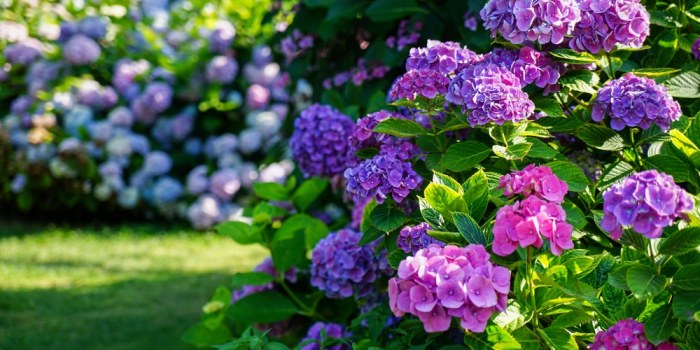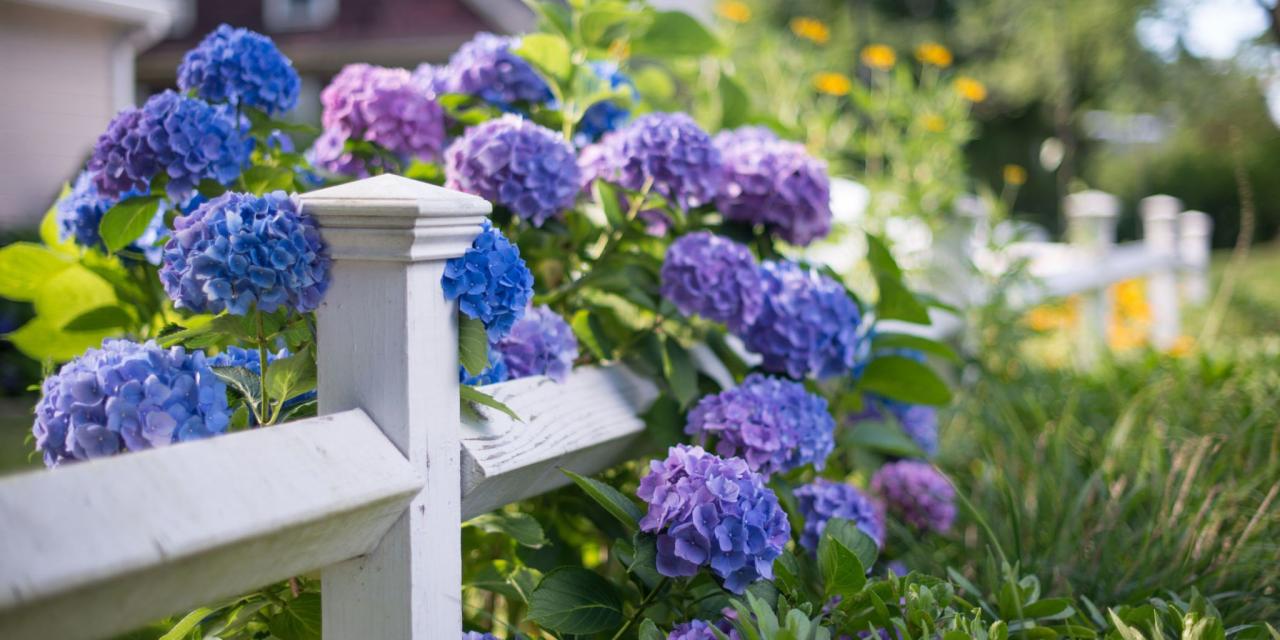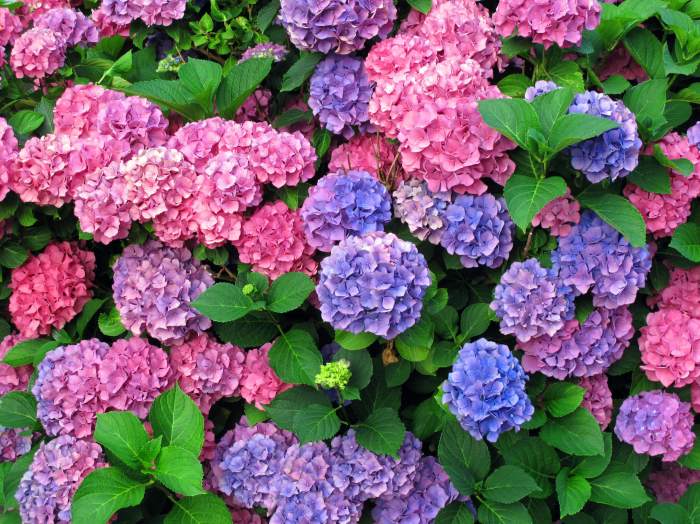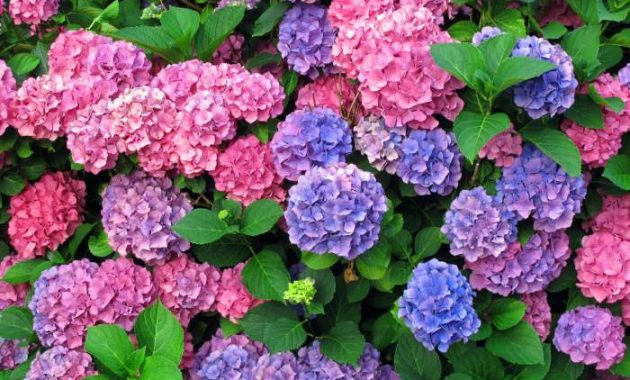Understanding Hydrangea Varieties and Their Planting Needs: When To Plant Hydrangea Tree

When to plant hydrangea tree – Embarking on the journey of cultivating hydrangeas requires a nuanced understanding of their diverse varieties and their specific needs. Choosing the right hydrangea for your garden depends not only on aesthetic preference but also on a careful consideration of your local climate and soil conditions. Success in hydrangea cultivation hinges on this initial, crucial step.
Hydrangea Varieties and Their Preferences
The remarkable diversity within the hydrangea family offers a plethora of choices for gardeners. Understanding the individual needs of each variety is paramount for successful cultivation. The following table highlights the preferences of five popular hydrangea types. Remember, these are guidelines; microclimates within your garden can influence these preferences.
| Variety | Climate Zone | Soil Type | Planting Time |
|---|---|---|---|
| Bigleaf Hydrangea (Hydrangea macrophylla) | 6-9 (some cultivars tolerate 5) | Well-drained, slightly acidic (pH 5.5-6.5) | Spring (after last frost) or early fall |
| Panicle Hydrangea (Hydrangea paniculata) | 3-8 | Well-drained, tolerates a wider range of soil pH | Spring or fall |
| Oakleaf Hydrangea (Hydrangea quercifolia) | 5-9 | Well-drained, acidic to slightly alkaline soil | Spring or fall |
| Smooth Hydrangea (Hydrangea arborescens) | 3-9 | Moist, well-drained soil, tolerates a wider range of pH | Spring or fall |
| Climbing Hydrangea (Hydrangea anomala petiolaris) | 4-7 | Well-drained, slightly acidic soil | Spring or early fall |
Planting Time Variations Among Hydrangea Varieties, When to plant hydrangea tree
While many hydrangeas can be planted in both spring and fall, the optimal time varies slightly depending on the variety and your specific climate. Spring planting allows the hydrangea to establish a strong root system before winter, while fall planting gives the roots time to settle before the next growing season. For example, in colder climates, spring planting is generally preferred to ensure the plant has sufficient time to acclimate before winter’s arrival.
Conversely, in warmer climates, fall planting can be advantageous, providing the roots with ample time to establish themselves before the heat of summer.
Growth Habits and Planting Spacing
Understanding the mature size and growth habit of each hydrangea variety is crucial for determining appropriate planting spacing. Bigleaf hydrangeas, for instance, can grow quite large and wide, necessitating a spacing of 3-4 feet. Conversely, panicle hydrangeas have a more upright growth habit and can be planted closer together, at a spacing of 2-3 feet. Oakleaf hydrangeas, with their more spreading habit, benefit from spacing similar to bigleaf hydrangeas.
Smooth hydrangeas are generally smaller and can be spaced at 2-3 feet apart. Climbing hydrangeas, as their name suggests, require ample support structures and spacing should be determined based on the size of the support structure. Proper spacing allows for optimal air circulation, preventing fungal diseases, and ensures each plant receives sufficient sunlight and nutrients.
Planting Procedures and Aftercare

Planting your hydrangea, whether from a bare root or container, is a crucial step in ensuring its vibrant future. Proper planting techniques and diligent aftercare will reward you with years of beautiful blooms. Let’s delve into the specifics, empowering you to nurture your hydrangea to its full potential.
The ideal time to plant a hydrangea tree is during spring or fall, after the last frost. However, choosing the right tree for your landscape is crucial, and figuring out the best tree to plant depends on your climate and soil conditions. Ultimately, the best time to plant your hydrangea will also depend on the specific variety and local weather patterns, so always check your region’s planting guidelines.
Bare-Root Hydrangea Planting
Planting a bare-root hydrangea requires careful attention to detail. The success of this process hinges on proper hole preparation and gentle root handling. Remember, a healthy root system is the foundation for a thriving plant.
- Digging the Hole: Prepare a hole twice as wide and as deep as the hydrangea’s root ball. This allows for ample root expansion and prevents root circling, a common cause of stunted growth. Imagine a spacious home for your hydrangea’s roots!
- Root Handling: Gently loosen any tangled roots before placing the hydrangea in the hole. Avoid harsh manipulation; treat these delicate roots with the utmost care. Think of it like untangling a precious piece of yarn.
- Positioning the Plant: Ensure the hydrangea is planted at the same depth it was previously growing. The graft union (if present) should be above the soil line. Proper depth is paramount for successful establishment.
- Backfilling: Gradually backfill the hole with soil, ensuring no air pockets remain. Firmly press the soil around the roots to eliminate gaps. This provides a stable environment for the roots to establish.
- Watering: Water thoroughly after planting to settle the soil and promote root contact. A good soaking will help your hydrangea settle into its new home.
Container-Grown Hydrangea Planting
Planting a container-grown hydrangea is generally simpler than planting a bare-root one, but still requires attention to detail. The key is to avoid damaging the root ball and ensure proper soil contact.
- Preparing the Hole: Dig a hole slightly larger than the container. This allows for easy removal of the hydrangea without damaging the roots. Think of it as creating a comfortable transition for your plant.
- Removing from Container: Gently remove the hydrangea from its container. If the roots are circling, carefully loosen them before planting. Remember, we want to encourage healthy root growth.
- Planting: Place the hydrangea in the hole, ensuring the top of the root ball is level with the surrounding soil. Avoid planting too deep or too shallow.
- Backfilling and Watering: Fill the hole with soil, gently firming it around the root ball. Water thoroughly after planting to eliminate air pockets and settle the soil.
Essential Aftercare Practices
Consistent aftercare is crucial for a healthy and flourishing hydrangea. These practices ensure your hydrangea thrives and rewards you with abundant blooms.
- Watering: Water regularly, especially during dry periods. Aim for consistent moisture, avoiding both overwatering and underwatering. A well-watered hydrangea is a happy hydrangea.
- Fertilizing: Feed your hydrangea with a balanced, acid-loving fertilizer in spring. This provides the essential nutrients for healthy growth and abundant blooms. Think of it as providing a nutritious meal for your plant.
- Mulching: Apply a layer of organic mulch, such as shredded bark or compost, around the base of the plant. This helps retain moisture, suppress weeds, and regulate soil temperature. Mulch acts as a protective blanket for your hydrangea’s roots.
Troubleshooting Common Planting Issues

Planting hydrangeas, while rewarding, can present challenges. Understanding and addressing potential problems proactively is key to cultivating healthy, vibrant blooms. This section will equip you with the knowledge to diagnose and solve common hydrangea planting issues, ensuring your success.
Let’s delve into the most frequent hurdles encountered and how to overcome them. Remember, a little preventative care goes a long way in ensuring your hydrangeas thrive.
Root Rot
Root rot, a fungal disease, is a significant threat to hydrangeas, often stemming from poorly drained soil and overwatering. Symptoms include wilting leaves despite adequate moisture, yellowing foliage, and a foul odor emanating from the soil. Prevention involves selecting a planting site with excellent drainage. Amend heavy clay soils with organic matter like compost to improve aeration and drainage.
Avoid overwatering; water deeply but infrequently, allowing the soil to dry slightly between waterings. If root rot develops, you may need to remove the affected plant, improve soil drainage, and replant with a healthy hydrangea in amended soil.
Improper Watering
Hydrangeas require consistent moisture, but overwatering or underwatering can both be detrimental. Underwatering leads to wilting, leaf scorch, and stunted growth. Overwatering, as discussed above, promotes root rot. The key is to achieve a balance. Water deeply and regularly, ensuring the soil remains consistently moist but not waterlogged.
Mulching around the base of the plant helps retain soil moisture and regulate temperature, reducing the frequency of watering. Observe the soil’s moisture level before watering; stick your finger a couple of inches into the soil. If it feels dry, it’s time to water.
Pest Infestations
Various pests can attack hydrangeas, including aphids, spider mites, and Japanese beetles. Aphids suck sap from leaves, causing stunted growth and yellowing. Spider mites create fine webbing on leaves and cause stippling. Japanese beetles devour foliage, leaving behind skeletonized leaves. Regularly inspect your hydrangeas for signs of infestation.
For minor infestations, a strong spray of water can dislodge pests. For more severe infestations, consider using insecticidal soap or neem oil, following product instructions carefully. Encourage beneficial insects, such as ladybugs, which prey on aphids.
Frequently Asked Questions
How deep should I plant a hydrangea?
Plant the hydrangea at the same depth it was growing in its container or with the root flare at or slightly above the soil line.
Can I plant hydrangeas in the fall?
Fall planting is possible in milder climates, but spring planting is generally safer to avoid winter damage.
What should I do if my hydrangea isn’t blooming?
Check soil pH (hydrangeas prefer slightly acidic soil), sunlight exposure, and ensure proper watering and fertilization.
How often should I water newly planted hydrangeas?
Water deeply and regularly, especially during dry spells, until established. Then reduce watering to maintain moist, not soggy, soil.

